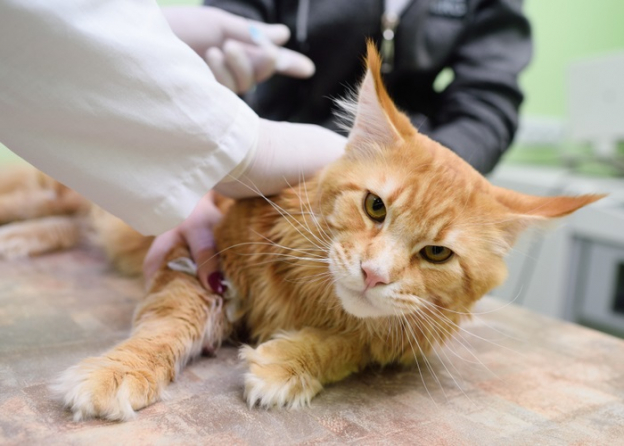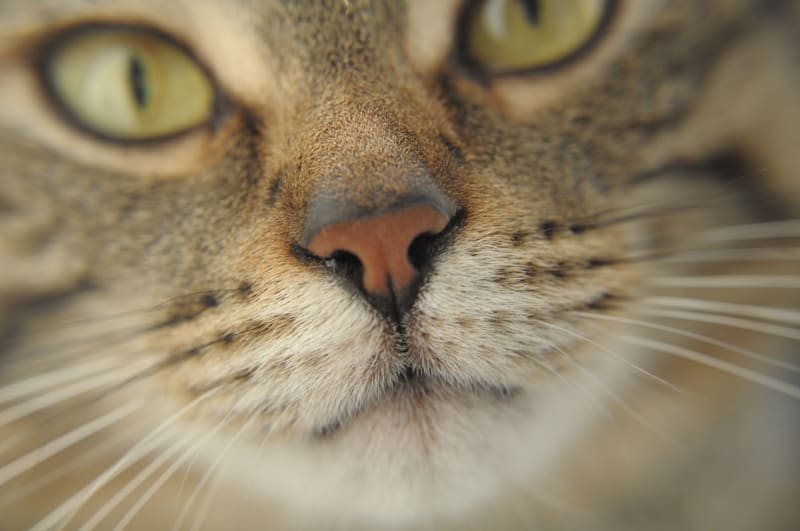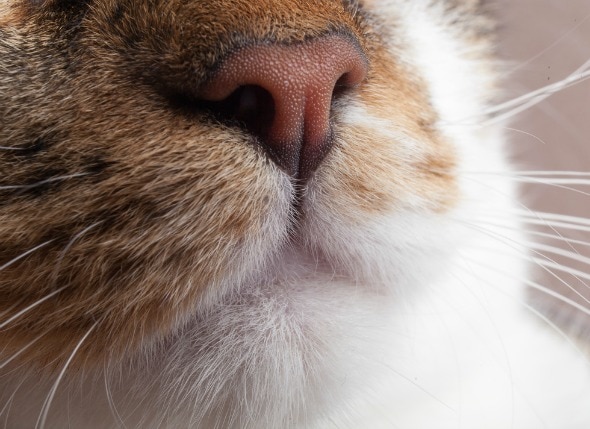nasal lymphoma in cats symptoms
Nasal tumors are found in the nasal cavity and the paranasal sinuses and affect cats. Lymphoma in Cats Symptoms.

Lymphoma In Cats Treatment Big Sale Off 62
While lymphoma is one of the most common cancer types affecting cats nasal lymphoma is relatively rare.

. Middle to older aged cats are most commonly diagnosed with nasal cancer. Lymphoma in the lymph nodes comes as swellings around the neck shoulder blades and knees. Its also important to note.
Nasal tumors are relatively uncommon in veterinary medicine accounting for less than 1 of all feline tumors. Common sites of lymphoma in cats include. The general symptoms in all cases are apathy weight loss and eating problems.
Disease present mostly in the peripheral lymph nodes which can be felt as enlarged lumps in the neck in front of the shoulder blades and behind the knees is much less common in cats than in dogs. Ten cats displayed multiorgan involvement and in 2 of these the involvement was limited to the cerebellum and frontal cortex respectively. The disease can also be found in internal lymph nodes in the chest cavity mediastinal lymphoma the liver spleen kidneys nasal cavity eyes.
Life expectancy of cats with lymphoma depends on many factors such as where the cancer is and how early it was diagnosed and treated. Get NHVs Lymphoma Gold Support Pack Today. Visual flight rules guide.
The most common types of nasal tumor are either a carcinoma or lymphoma which are. Up to 10 cash back Symptoms of Lymphoma in Cats. Gastrointestinal lymphoma refers to lymphomas where the cancer appears in.
Affects the gastrointestinal tract this is the most common type more likely in senior cats. Lymphoma is one of the most common malignancies in cats and gastrointestinal or GI lymphoma in cats is an increasingly common problem. Symptoms of nasal cancer in cats can remain concealed for as long as five years until the disease presents itself as a serious threat.
1 Nasal lymphoma although an uncommon type of lymphoma is the most common tumor of the nasal cavity in cats. Its a cancerous infection of the lymphocyte cells and is one of the few cancers that is localized and thus easier to treat. The symptoms of lymphoma in cats depend on where the cancer is growing.
It is most common in felines between the ages of 5 and 9. This retrospective study examined survival times in cats given different therapies and evaluated. Lymphoma remains the most common form of cancer in cats with the average life expectancy after symptoms averaging six months.
Generally speaking the life expectancy is between 4 weeks to 2 years. Sneezing or nasal discharge nasal lymphoma. The two most common types of nasal tumors in cats are lymphoma cancer of the lymph tissue and.
Most cats develop feline nasal lymphoma when they are young. To date no specific breed or sex predisposition has been noted. The most affected area is usually the nasal cavity and this variant is accompanied by strange secretions and difficulty breathing.
Because of the position they dont feel comfortable doing a biopsy so I actually dont know if she has lymphoma or not. It also cannot be passed to other animals in a household including dogs lizards birds and other exotic animals so dont worry if one. This form of multicentric feline cancer generally is caught late and by that point chances of a cats survival are low.
As with all varieties of this cancer GI lymphoma is a disease of the lymphatic system and targets cells called T-or B-lymphocytes. Life Expectancy Thankfully the most common type of feline lymphoma intestinal lymphoma is often low-grade. Feline nasal lymphoma cannot be transmitted cat-to-person or even cat-to-cat.
Some symptoms of lymphoma in cats include. Respiratory distress is typical of mediastinal lymphoma. Fifty cats were diagnosed with lymphoma at necropsy via biopsy or by cytology alone.
Ad Help your pet cope with symptoms like loss of appetite nausea and swollen lymph nodes. The symptoms of lymphoma generally relate to the location of the disease. Survival analysis of 97 cats with nasal lymphoma.
High-grade and low-grade lymphoma. Intestinal Lymphoma in Cats. Hematopoietic neoplasms including lymphoma are one of the most common cancers diagnosed and treated in veterinary medicine and account for approximately one-third of all cancers in cats.
Originates in the lymph nodes. Geometric wood accent wall. Sparkly nails for summer.
Of the tumors 41 of 50 82 were classified as nasal lymphoma 5 of 50 10 were classified as nasopharyngeal. Continue reading Feline Nasal Tumors. Affects the lymphoid organs in the chest most often seen in young cats.
In general the symptoms may reflect other diseases and specialized tests are typically required to obtain a cancer diagnosis. A multi-institutional retrospective study 1986-2006 J Vet Intern Med 232. Symptoms depend on how advanced the growths have become but may include.
Neoplasia of the nasal cavity can substantially decrease a patients quality. Unlike the symptoms of liver cancer symptoms of nasal cancer will seldom mimic symptoms of other conditions. Affects the kidneys as healthy kidney cells get replaced by cancerous cells.
Symptoms of nasal cancer in cats can remain concealed for as long as five years until the. Cat lymphomas are also divided based on location nasal cavity mediastinal multicentric gastrointestinal and others. Each cancer can have a low.

How Do I Know If My Cat Has A Nasal Tumor Long Island Vets

Cutaneous Lymphoma In Cats Veterinary Partner Vin

Nose And Sinus Cancer Squamous Cell Carcinoma In Cats Petmd

Learn About Nasal Cancer In Cats Petcure Oncology

Lymphoma In Cats Veterinary Partner Vin

Nasal Lymphoma In A Cat Today S Veterinary Nurse

Lymphoma In Cats Veterinary Partner Vin

Understanding Lymphoma In Cats

Nasal Lymphoma In Cats A Guide Canna Pet

Nasal Squamous Cell Carcinoma In Cats Veterinary Partner Vin

Lymphoma In Cats Symptoms Diagnosis Treatment All About Cats

Nasal Lymphoma In Cats A Guide Canna Pet

Lymphoma In The Cat Fact Sheet Davies Veterinary Specialists

Facial Distortion And Epiphora In A Cat With A High Grade Large B Cell Download Scientific Diagram


